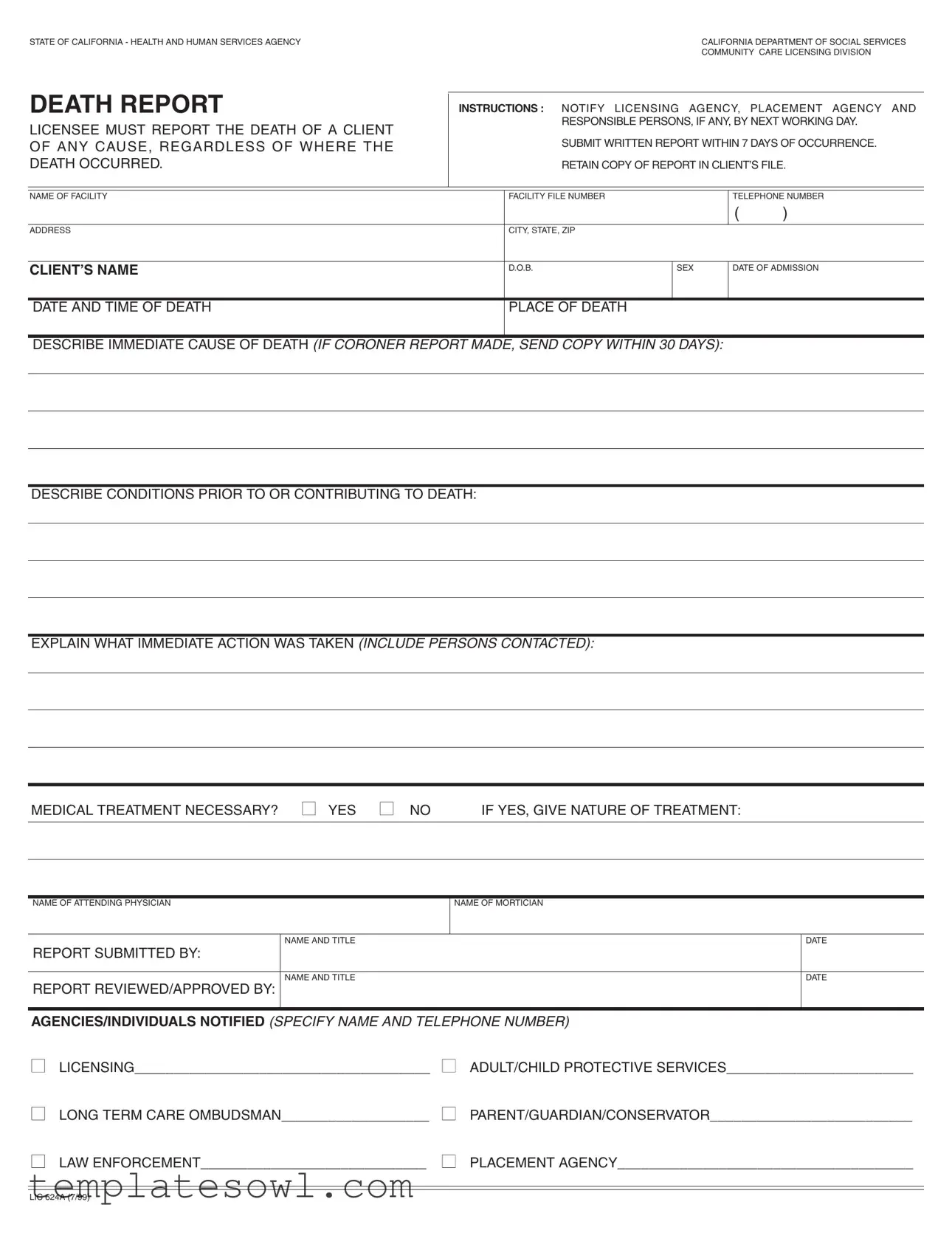What is the purpose of the California Death Report form?
The California Death Report form is used to notify the relevant authorities about the death of a client in care. This includes the licensing agency, placement agency, and any responsible persons. Reporting ensures compliance with state regulations and allows for proper oversight and investigation if necessary.
Who is required to submit the Death Report?
The licensee of the facility must submit the Death Report. Additionally, any responsible persons associated with the client must also be notified. This includes caregivers and facility staff involved in the client's care.
When must the Death Report be submitted?
The report must be submitted within 7 days of the client's death. Moreover, the responsible parties must notify the appropriate licensing agency and placement agency by the next working day after the death occurs.
What information is needed on the Death Report?
Key details required on the report include the client’s name, date of birth, sex, date and time of death, cause of death, any contributing conditions, and actions taken immediately after the death. The form also requires names of involved medical personnel and agencies notified regarding the death.
What should be done if a coroner's report is made?
If a coroner's report is issued, a copy must be submitted with the Death Report within 30 days of the client’s death. This ensures that the licensing agency has all the relevant information for review.
Where should copies of the Death Report be kept?
A copy of the Death Report should be retained in the client's file at the facility. This documentation may be crucial for future audits and for maintaining accurate records regarding the care provided to the client.

